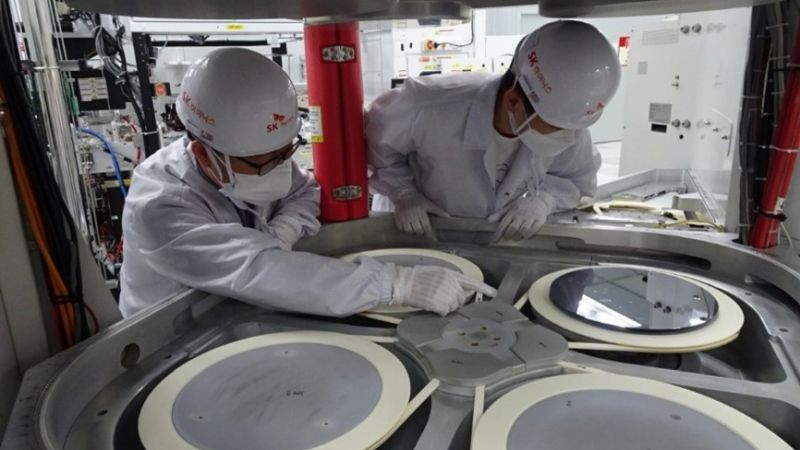SEMI and TechInsights experts in a joint report made it clear that the emerging rise in demand for semiconductor components in the second quarter is just the beginning of a trend that, by the end of the third quarter, will help the integrated circuit market exceed revenue levels in 2021, which were record levels amid the pandemic. Now the market is driven upward by the so-called artificial intelligence boom.

Image Source: SK Hynix
Formally, at the end of the first half of the year, revenue from the sale of electronic components as a whole decreased by 0.8% year-on-year, as the result was influenced by seasonal factors and lower demand in the consumer sector. In the third quarter of this year, according to the authors of the study, sales of electronic components should grow in monetary terms by 4% year-on-year and by 9% sequentially.
Specifically, in the segment of integrated circuits, revenue in the second quarter grew by 27% year-on-year, and in the current quarter it could grow by as much as 29%, as experts expect. This will allow it to reach record levels, which will be higher than the previous maximum observed at the height of the pandemic in 2021. Currently, demand is driven by the need of market participants for components for artificial intelligence systems. Inventory volumes in the first half of the year decreased by 2.6%, which also indicates a revival of the market.
Production capacity for processing silicon wafers is also expanding; at the end of the second quarter, they reached 40.5 million wafers of standard size 300 mm over a three-month period. In the current quarter, they will increase by another 1.6% if the SEMI and TechInsights forecast comes true. In the contract manufacturing and logic IC segment, wafer processing capacity grew 2% in the second quarter and is on track to increase 1.9% in the current quarter. The memory production segment is also increasing its capacity, in the second quarter it added 0.7%, and in the third it will add 1.1%, largely due to the high demand for HBM chips. China turned out to be the leader in the rate of expansion of production, although the level of utilization of local enterprises is far from optimal, which negatively affects the cost of production.
Capital expenditures in the semiconductor industry fell by a moderate 9.8% in the first half of the year. The trend should turn positive in the third quarter as overall industry capex is expected to increase 16% sequentially and outside the memory segment it will increase 6% qoq. In other words, it will be memory manufacturers who will be spending more money this quarter to expand their capacities.